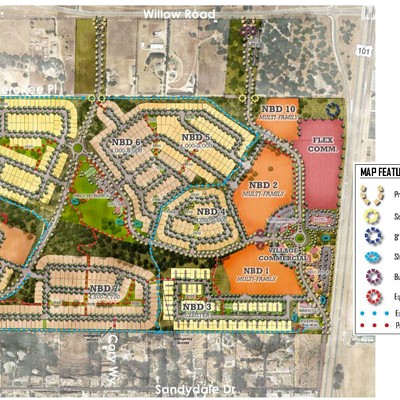I’m writing this the day after the oil spill off the coast of Orange County hit the news. By the time you read this, I doubt I’ll be the only one to have drawn a straight line between what just happened off Orange County and what happened two days earlier at the Santa Barbara County Planning Commission.
But just to make sure:
The Orange County spill reportedly dumped at least 126,000 gallons of oil into the sea. The oil apparently started flowing from a pipeline connected to an oil platform 5 miles offshore of Long Beach on the night of Oct. 1 (but wasn’t reported until the next day) and began washing up onshore and seeping into coastal marshlands. Per the Daily Breeze, the spill will entail tens of millions of dollars in damage and cleanup costs, and has “coated hundreds of animals in oil, many of which died. It also forced offshore areas to be put off limits to fishing.”
Two days earlier, the Exxon Be Gone coalition celebrated a win at the Santa Barbara County Planning Commission, when the commissioners voted 3-2 to recommend denial of the ExxonMobil Interim Trucking—Santa Ynez Unit Phased Restart Project.
The project name is a mouthful, but here’s what it means: ExxonMobil proposes to restart three aging, offshore oil platforms that have been shuttered since the Refugio oil spill six years ago, plus the restart of their onshore facilities, expected to generate 317,043 metric tons of greenhouse gasses per year (equivalent to about 70,000 cars), and then transport more than 1 billion gallons of oil via 25,000 round-trip diesel tanker truck trips a year through Santa Barbara, San Luis Obispo, and Kern counties on highways 101 and 166.
The Sierra Club’s Los Padres Chapter for Santa Barbara and Ventura counties, along with the Santa Lucia Chapter, Kern-Kaweah Chapter, Sierra Club California, and Sierra Club National were among the groups urging denial of the project at the Sept. 29 meeting of the Santa Barbara Planning Commission. We pointed out that the risk of spills from trucking the oil is a significant Class 1 impact under the California Environmental Quality Act; trucks are the least safe way to transport oil; many places prohibit transporting hazardous materials next to waterways, over bridges, through tunnels, and on windy roads; and these particular stretches of road have a long and deadly accident history.
Worse: The project’s environmental review considered only the trucking impacts, not the risks of restarting offshore oil production from Exxon’s three aging offshore platforms, which are beyond their projected end of life, have had numerous documented problems with corrosion and leaks, and were slated for decommissioning in 2020 if the Refugio spill hadn’t intervened in 2015. Offshore spills can never be completely cleaned up, and marine ecosystems do not fully recover even decades after a spill.
It also seemed worth mentioning that in 1982, the year Exxon signed a memorandum of agreement with Santa Barbara County and the state of California for the Santa Ynez offshore unit, promising to “provide for protection of the environment while undertaking the production of oil and gas resources,” Exxon’s environmental affairs office sent an internal report to management that said that the consequences of climate change could be catastrophic, and that a significant reduction in fossil fuel consumption would be necessary to curtail future climate impacts. Exxon then spent the next 40 years covering this up and blocking solutions.
At the end of that hearing, the county Planning Commission agreed: The project wasn’t worth the risks, and they would recommend denial to the Santa Barbara County Board of Supervisors.
I want to think that if that meeting had happened four days later, the 3-2 vote would have been much less close.
Katie Davis, chair of the Sierra Club’s Los Padres Chapter, noted, “Opposition to this project is overwhelming, ranging from cattle ranchers at Hollister Ranch, the Chumash people who have inhabited the Gaviota coast and our region for thousands of years, the Fearless Grandmas and student groups, the coastal cities, school and water districts, business leaders, environmental groups that first emerged from the 1969 oil spill, people from all three counties, and even beyond—literally thousands of people have spoken in opposition to this project, and multiple rallies and protests have been held over the course of several years.”
Conspicuous by their silence: the San Luis Obispo County Board of Supervisors and the cities of Pismo Beach, Grover Beach, Arroyo Grande, Atascadero, and Paso Robles.
This project promises a double whammy: three resurrected offshore rigs, plus 70 tanker trucks a day coming up the coast and across Highway 166 through the Cuyama River watershed. Now would be the time for our local governments to decide where they stand on the issue of marine wildlife, fishing, tourism, and recreation vs. an oil giant’s profits, and send formal notification of that position and a request for action to the Santa Barbara County Board of Supervisors.
You’ve got one shot. Early November would be good.
Andrew Christie is the director of the Santa Lucia Chapter of the Sierra Club. Send comments through [email protected].









